- Details
- Flash Memory
Toshiba Memory Corporation and Western Digital Corporation today celebrated the opening of a new state-of-the-art semiconductor fabrication facility, Fab 6, and the Memory R&D Center, at Yokkaichi operations in Mie Prefecture, Japan.

Toshiba Memory started construction of Fab 6, a dedicated 3D flash memory fabrication facility, in February 2017. Toshiba Memory and Western Digital have installed cutting-edge manufacturing equipment for key production processes including deposition and etching. Mass production of 96-layer 3D flash memory utilizing the new fab began earlier this month.
0 Comments- Details
- Flash Memory
GIGABYTE TECHNOLOGY Co. Ltd, a leading manufacturer of motherboards and graphics cards, has added new NVMe PCIe M.2 SSDs to its storage lineup following the overwhelmingly positive reception to its first SATA series. With different storage capacities to choose from, the new SSDs adhere to GIGABYTE Ultra Durable and product stability standards, delivering highly stable and effective SSD performance.

The initial batch of GIGABYTE M.2 SSDs are available in three capacities, 128GB, 256GB, and 512GB sizes. The new SSDs adopt 2280 mainstream specifications and operate by way of the PCIe Gen3 x2 M.2 transmission interface, removing the need for power and transmission cables that are used with traditional SATA SSDs. Installation of these M.2 devices are more straightforward and the lack of cables makes way for improved airflow and heat dissipation inside the casing, strengthening the overall performance of these devices. NVMe architecture allows for superior read/write speeds compared to SATA SSDs and with M.2 Thermal Guards on GIGABYTE motherboards, GIGABYTE M.2 devices offer much improved performance at an incredible value for those who want to upgrade from SATA SSDs to NVMe M.2 SSDs without breaking the bank.
0 Comments- Details
- Network Storage
Synology Inc. today officially announced Surveillance Station 8.2. This release showcases LiveCam, a brand new security camera app that instantly turns a spare phone into an IP camera. The iOS version has been released with the Android version coming around October. The revamp of DS cam offers higher performance, along with the addition of IP speakers to the hardware support list. The next generation of Application Center offers greater flexibility for application management.

"With the combination of LiveCam on iOS and the brand new DS cam, Surveillance Station has entered a mobile era of transforming the phone into a security camera and having its video recordings accessible by DS cam" said Ivan Chang, Product Manager at Synology Inc. "Features like Smart Time Lapse, Dual Authentication and support for IP speakers make Surveillance Station the project-ready solution."
0 Comments- Details
- Hard Disks
ADATA today announces the launch of the HD830, its most rugged external hard disk drive (HDD) to date. It features an ultra-sturdy aluminum exterior, triple-layer construction, and IP68 rating for the ultimate protection of data. What’s more, the HD830 is MIL-STD-810G 516.6 compliant and can withstand up to 3000kg of downward pressure. The HDD is also equipped with shock sensors that prevent errors and bad sectors due to accidental impact and shaking.
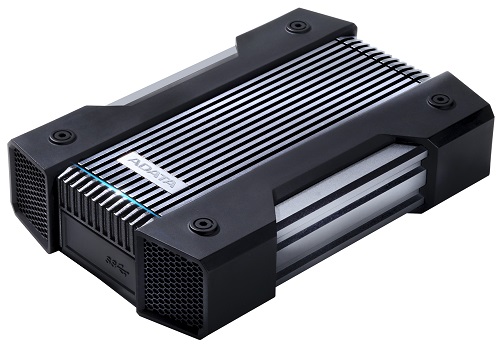
Virtually Indestructible
The HD830’s tough aluminum exterior is not just capable of surviving nasty drops and blunt force, but can also handle 3000kg of downward pressure, roughly equivalent to the combined weight of fifty average-sized people. The HD830 also meets the U.S. Military’s MIL-STD-810G 516.6 standard and can survive falls from up to 1.22 meters. A three-layer construction provides complete protection inside and outside, including a tough outer silicone casing that comes in red or blue, shock-absorbing buffer, and cushioned mounting that firmly holds the drive in place.
- Details
- Flash Memory
Akitio, innovators and developers of high-tech Thunderbolt products has announced the availability of the new Special Edition red Node Lite with 960GB Intel Optane SSD 905P. The red Node Lite bundled with an Intel Optane drive is now available on Amazon and through various Akitio resellers.
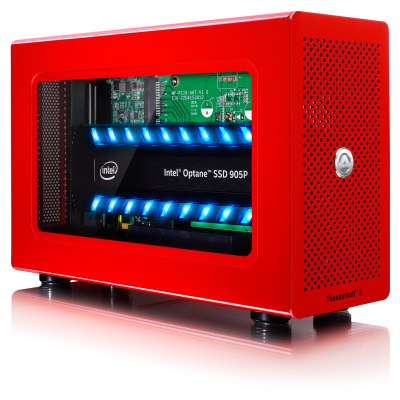
With industry-leading performance and endurance, the Node Lite with Intel® Optane™ SSD delivers incredibly fast transfer rates of up to 2600 MB/s. Connecting to a computer via Thunderbolt™ 3, this external drive is ready to handle even the most demanding storage workloads for both Mac and PC users.
0 Comments- Details
- Hard Disks
Seagate Technology, a world leader in data storage solutions, today launched the industry’s widest range of advanced 14TB hard drives, enhancing the company’s enterprise and specialty drive portfolio. Consisting of IronWolf and IronWolf Pro for network attached storage (NAS) applications, the BarraCuda Pro desktop drive, surveillance-optimized SkyHawk, and Exos X14 for hyperscale data centers, this purpose-built portfolio empowers customers to consume, manage and utilize digital data more effectively and efficiently while establishing new benchmarks in speed and capacity.
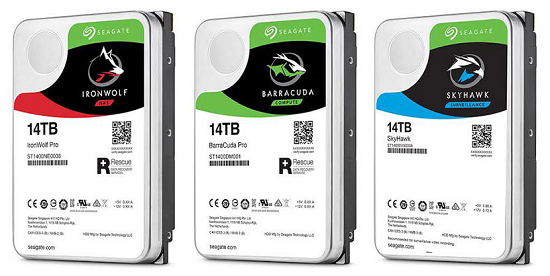
With this offering, Seagate continues to lead the industry in driving data storage technology toward a lower cost per terabyte through hard drive optimization, versatility of application, and unmatched capacity. Whether for personal use, creative and design computing, online gaming, or large-scale surveillance systems and hyperscale environments, Seagate drives are opening up new data management opportunities across a wide range of markets.
0 Comments- Details
- Flash Memory
 ADATA Technology, a leading manufacturer of high-performance DRAM modules and NAND flash products, today launched the ADATA IUSP33F PCIe ball grid array (BGA) solid state drive (SSD). The SSD sports a form factor that is 80 percent more compact than M.2 2242 SSDs. Combined with a PCIe Gen3x2 interface and 3D Flash memory for excellent performance and durability, the IUSP33F is an ideal solution for slim-form-factor tablets, notebooks, hybrids, mini-PCs, thin clients, and wearables.
ADATA Technology, a leading manufacturer of high-performance DRAM modules and NAND flash products, today launched the ADATA IUSP33F PCIe ball grid array (BGA) solid state drive (SSD). The SSD sports a form factor that is 80 percent more compact than M.2 2242 SSDs. Combined with a PCIe Gen3x2 interface and 3D Flash memory for excellent performance and durability, the IUSP33F is an ideal solution for slim-form-factor tablets, notebooks, hybrids, mini-PCs, thin clients, and wearables.
“We are thrilled to be introducing the new IUSP33F SSD, a compact solution that will enable next-generation tablets, ultrabooks, and other slim devices, but without compromising on performance and reliability,” said Hedi Huang, Sales Director of ADATA. “But the versatility of the IUSP33F goes beyond just these applications, and are also well-suited for new emerging applications in areas such as robotics, augmented and virtual reality, and automotive.
Small Profile for Slim Devices
With the growing prevalence of 3D Flash and advancements in manufacturing, SSDs are becoming ever more lightweight and compact, and the IUSP33F is a result of these developments. Thanks to its compact 11.5mm by 13mm BGA package and NAND Flash, the IUSP33F sports a profile that is comparable to that of eMMC memory. The reduced profile of the IUSP33F makes it suitable for slim devices where space is at a premium.
0 Comments- Details
- Flash Memory
KINGMAX, a world-renowned professional memory manufacturer, has consummated its product line of M.2 2280 PCIe NVMe solid-state drives (SSDs), providing users who want to improve their PC performance with a greater variety of choices. In addition to the ultra-fast M.2 PCIe SSD PX-3480 (Gen3x4) and the PX-3280 (Gen3x2), the affordable/entry-level PJ-3280 (Gen3x2) has also been introduced, allowing users who are considering turning to SSDs to boost their computer performance a higher-speed and more economical option aside from 2.5-inch solid-state drives.
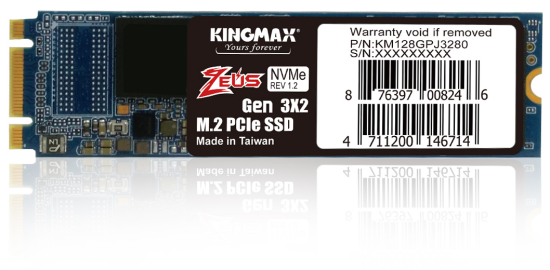
An increasing variety of motherboards or notebooks are currently available on the market, including motherboards equipped with Intel Z270, X99 and the latest 2 Series/3 Series chipsets, all of which are equipped with the M.2 PCIe interface as standard equipment to enable future upgrades. As long as the M.2 slot is the M key version, a solid-state drive that comes with the M.2 PCIe interface can be employed to push the speed and performance of a computer to higher levels. The KINGMAX M.2 2280 NVMe SSD PJ-3280 (Gen3x2) is manufactured using 3D NAND Flash stacking technology, making it highly efficient, stable and durable. Meanwhile, the M.2 2280 is 22x80 mm in size and is available in capacities of 128GB, 256GB or 512GB, suitable for improving the performance of space-challenged notebooks and ultrabooks while expanding capacity.
0 Comments- Details
- Flash Memory
PATRIOT, a global leader in performance memory, SSDs, gaming peripherals, and flash storage solutions today has announced the availability of the EVLVR Thunderbolt 3 external SSD, offering a breakthrough evolution in SSD technology.
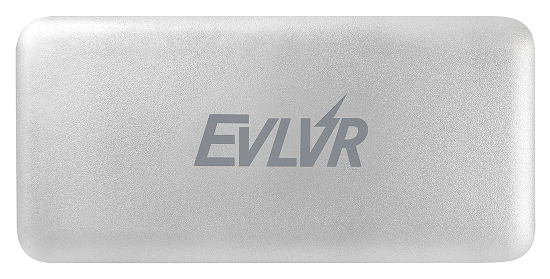
The amount of data that users transfer, and store has been getting larger over the years due to major evolutions in technology and the ability to quickly process large amounts of data. Ideal for HD content, portable boot drives, video game libraries, high capacity jobs and more, Patriot's EVLVR Thunderbolt 3 external SSD brings fast speeds and convenience for consumers everywhere.
0 Comments- Details
- Network Storage
QNAP Systems, Inc. (QNAP), a leading storage, network and computing solution provider, unveiled the high-performance TS-x77XU rackmount NAS series. This series features the 8-bay TS-877XU-RP, 12-bay TS-1277XU-RP, and 16-bay TS-1677XU-RP. Utilizing the blazing-fast AMD Ryzen™ processor family with high core/thread counts, the TS-x77XU series has been significantly boosted to meet the most-demanding virtualization needs of enterprises.
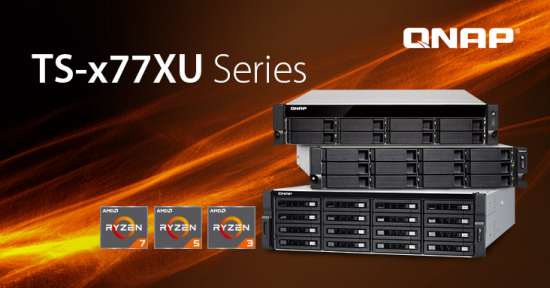
The TS-x77XU series is available with Ryzen 3 1200, Ryzen 5 2600, and Ryzen 7 2700 processors, all of which demonstrate astonishing processing power for versatile applications and scenarios (including desktop and server virtualization, on-the-fly video transcoding/streaming, and private cloud infrastructure). Four PCI Express (PCIe) slots are available in all models, allowing users to expand NAS functionality with network adapters (40GbE, 10GBASE-T/NBASE-T™), USB 3.1 Gen 2 (10 Gbps) cards, M.2 SSD cards, and graphics cards. The TS-1677XU comes with a 500 W power supply unit (PSU) to support a graphics card that requires additional power. Models with redundant power supplies are also available.
0 Comments
